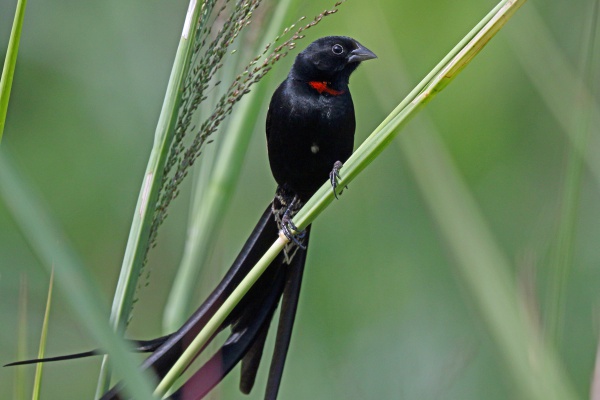Facts About Red-collared widowbird
The red-collared widowbird is a striking species native to Eastern and Southern Africa, easily identifiable by its long tail and vibrant red collar, which serve as sexual ornaments crucial for attracting mates. This species belongs to the genus Euplectes and comprises three recognized subspecies. These birds can be observed in various habitats, ranging from open grasslands to dense forests.
One of the most fascinating aspects of the red-collared widowbird is the stark difference in appearance between the breeding and non-breeding seasons. Males, in particular, undergo a dramatic transformation, showcasing their impressive plumage during the breeding season to attract females. Their diet is quite diverse, consisting of seeds, nectar, berries, and insects. They often form communal roosts with other bird species.
In terms of mating behavior, males are highly territorial and fiercely defend their patches of land, which are crucial for attracting females. Females, on the other hand, take on the responsibility of building nests where they lay eggs and rear their chicks. Despite these demanding behaviors, the red-collared widowbird is not considered a threatened species, thanks to its wide distribution and healthy population size.
The males' long tails and bright red collars are not just for show; they are costly to maintain and signal the bird's dominance and fitness to potential mates and rivals. These traits are enhanced by high concentrations of carotenoids in their plumage, obtained from their diet. The red-collared widowbird uses a variety of signals to communicate different messages, whether to attract a mate or fend off a competitor.

 Equatorial Guinea
Equatorial Guinea